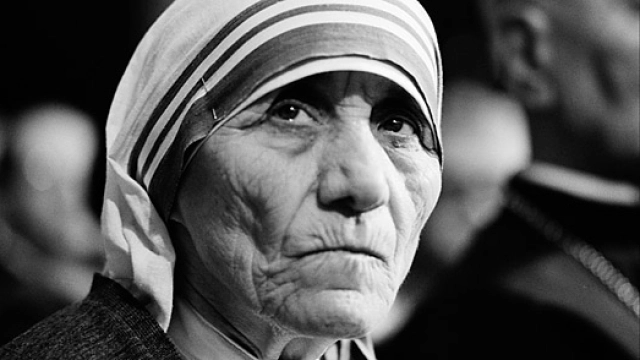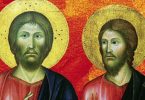James Fell
I don’t believe in heaven or hell, so I’m just gonna say it: “Mother Teresa was . . . not good.” How dare someone criticize a saint? It’s easier if you realize that religion is a human construct and that saints and miracles don’t really exist except in the minds of people who built one of the largest and most successful systems of control in human history.
–On This Day in History, Shit Went Down: October 7, 1950–
Born Anjezë Gonxhe Bojaxhiu in 1910 in what is now North Macedonia, then Sister Teresa proclaimed that while visiting Calcutta (now Kolkata) she received an “order” as a religious experience to live among the poor and help them. She began her missionary work and it received enough attention that on October 7th, 1950, she was granted permission from the Vatican to begin the Missionaries of Charity. In her words, she would help “the hungry, the naked, the homeless, the crippled, the blind, the lepers, all those people who feel unwanted, unloved, uncared for throughout society . . .” Just how well she cared for such people became a subject of much debate.
Being she won a Nobel Peace Prize in 1979, and the Catholic Church canonized her in 2016, there has of course been much criticism of the criticism, but the criticism is based on direct observation and ample research, so here we go.
Noted polemicist and militant antitheist Christopher Hitchens wrote a book with the telling subtitle “How Religion Poisons Everything.” It’s no surprise he wasn’t a fan. I’m more interested in the analysis of Dr. Aroup Chatterjee, a physician born and raised in Kolkata who spent years as an activist in the city’s slums and even worked for a brief time in one of Teresa’s charitable homes. Disgusted with what he saw, he conducted over a hundred interviews to write a book to describe Teresa’s “cult of suffering.”
Tremendous amounts of money came into the Missionaries of Charity, but it didn’t all appear to find its way to helping those in need. Rather, it went toward converting people to Christianity. Children were tied to beds. Those dying in agony were given little more than aspirin. Hypodermic needles were reused and there was zero privacy even for defecation. People with no medical training administered long-expired medicines. Shit-stained blankets were washed in the same sink dishes were washed in.
The editor for the Lancet visited Teresa’s hospice in Kolkata in 1994 and described the medical care as “haphazard” and that many in the hospice weren’t actually dying, but simply ill, yet there was no proper diagnosis or effort to save them, and pain management was practically nonexistent. And a 2013 academic study out of the Université de Montréal revealed that her hallowed image was carefully constructed by the Catholic Church rather than earned via merit, and that the missions practiced “caring for the sick by glorifying their suffering instead of relieving it.”
In her own words, Mother Teresa said in 1981, “I think it is very beautiful for the poor to accept their lot . . . I think the world is being much helped by the suffering of the poor people.”








